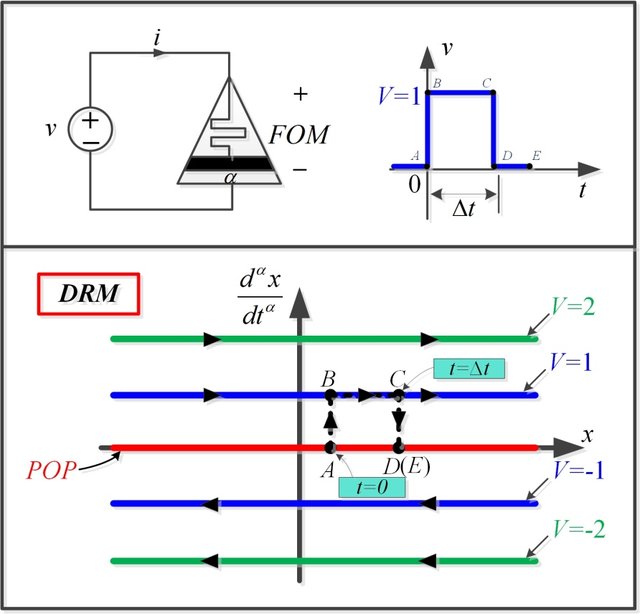Breadcrumb
Study of Energy Harvesters for Wearable Devices
Energy harvesting was and still an important point of research. Batteries have been utilized for a long time, but they are now not compatible with the downsizing of technology. Also, their need to be recharged and changed periodically is not very desirable, therefore over the years energy harvesting from the environment and the human body have been investigated. Three energy harvesting methods which are the Piezoelectric energy harvesters, the Enzymatic Biofuel cells, and Triboelectric nanogenerators (TENGs) are being discussed in the paper. Although Biofuel cells have been investigated for a
Analytical Markov model for slotted ALOHA with opportunistic RF energy harvesting
In this paper, we investigate the performance of an ALOHA random access wireless network consisting of nodes with and without RF energy harvesting capability. We develop and analyze a Markov model for the system when nodes with RF energy harvesting capability are infinitely backlogged. Our results indicate that the network throughput is improved when the conventional nodes are underloaded. On the contrary, when all types of nodes have finite backlogs, we numerically demonstrate that the network throughput and delay are improved when the overall system is overloaded. We show that there exists a
Improvement of structural efficiency in metals by the control of topological arrangements in ultrafine and coarse grains
Improvement of structural efficiency in various materials is critically important for sustainable society development and the efficient use of natural resources. Recently, a lot of attention in science and engineering has been attracted to heterogeneous-structure materials because of high structural efficiency. However, strategies for the efficient design of heterogenous structures are still in their infancy therefore demanding extensive exploration. In this work, two-dimensional finite-element models for pure nickel with bimodal distributions of grain sizes having ‘harmonic’ and ‘random’

Nanocomposite matrix conjugated with carbon nanomaterials for photocatalytic wastewater treatment
The problem of hazardous wastewater remediation is a complicated issue and a global challenge. Herein, a layered Co0.5Ni0.5Fe2O4/SiO2/TiO2 composite matrix was prepared and incorporated with three carbon nanomaterials having different dimensionalities, carbon dots (C-dots, 0D), single-walled carbon nanotubes (1D), and reduced graphene oxide (2D), in an effort to create effective photocatalytic nanocomposites for chloramine-T removal from water. Microstructural analyses confirmed the formation of nanocomposites and revealed their chemistry and structure. Elemental mapping revealed a uniform

Nanostructured Mg substituted Mn-Zn ferrites: A magnetic recyclable catalyst for outstanding photocatalytic and antimicrobial potentials
With recently increasing the environmental problems and expected energy crisis, it is necessary to synthesis a low-cost, efficient, and UV-light responsive photocatalyst for contaminants’ degradation. The nanostructured spinel ferrite Mn0.5Zn0.5-xMgxFe2O4 NPs (x = 0.0, 0.125, 0.25, 0.375 and 0.50) were synthesized via the sol-gel method. The crystallite size was lied in nano regime ranging from 21.8 to 36.5 nm. The surface chemical composition of the Mn0.5Zn0.5-xMgxFe2O4 NPs was investigated via XPS analysis. Mossbauer spectra showed that the peaks were shifted to higher values of the maximum

Multistep deposition of Cu2Si(S,Se)3 and Cu2ZnSiSe4high band gap absorber materials for thin film solar cells
Cu2ZnSi(S,Se)4 and Cu2Si(S,Se)3 are potential materials to obtain cost effective high band gap absorbers for tandem thin film solar cell devices. A method to synthesize Cu2SiS3, Cu2SiSe3and Cu2ZnSiSe4thin film absorbers is proposed. This method is based on a multistep process, using sequential deposition and annealing processes. X-ray diffraction analysis performed on the final thin films have confirmed the presence of the Cu2Si(S,Se)3 and Cu2ZnSiSe4phases. Scanning electron microscopy images revealed the formation of polycrystalline layers with grains size up to 1 μm. The band gap of the
Study of fractional flux-controlled memristor emulator connections
In this paper, the series and parallel connections of the fractional flux-controlled memristors are studied. Asymmetric I-V hysteresis with high I-V nonlinearity can be obtained from single fractional memristor as reported in literature. However, connecting different memristor emulators can convert the asymmetric hysteresis to symmetric one and maintaining the high I-V nonlinearity to be used in some memristor devices. The proposed circuits have been analyzed mathematically to study the effect of changing the frequency and fractional power. Different cases have been verified on PSpice using
Stochastic modeling of mushroom—waveguide photodetectors
Waveguide photodetectors (WGPDs) are one of the promising candidates to solve the tradeoff between the quantum efficiency and the transit time in the surface illuminated photodiodes where the lightwave is incident laterally perpendicular to the direction of the flow of generated carriers, enhancing both high speed and quantum efficiency. In Mushroom-WGPDs, the performance degradation due its parasitic capacitance and the load resistance is overcome due to the mesa mushroom structure. Inaccuracies in the dimensions of’Mushroom-WGPDs due to the fabrication affect its functionality and its

Multiple Pinch-Off Points in Memristive Equations: Analysis and Experiments
Pinched hysteresis behavior is considered evidence of the existence of the memristive element. Recently, the multi-lobes (more than two) behavior has been discovered in some memristive devices. In this paper, a fractional-order flux/voltage-controlled memristive model is introduced that is able to develop multiple symmetric and asymmetric pinch-off points. Generalized closed-form expressions for the necessary conditions of multiple pinch-off points existence are derived in addition to the coordinates of the pinch-off points in the I-V plane. Closed-form expressions for the minimum and maximum

Supercapacitor reciprocity and response to linear current and voltage ramps
The focus in supercapacitor research typically falls into one of two categories: (i) the rational design and engineering of electrode materials and electrolyte formulation to achieve high performance devices at competitive costs, and (ii) the modeling of their resulting behavior in response to constant-current charging/discharging, cyclic voltammetry or impedance spectroscopy. However, less work has been dedicated to new ways for charging these devices. In this work we show that charging a supercapacitor, modeled as a constant phase element with a series resistor, using a linear voltage ramp
Pagination
- Previous page ‹‹
- Page 3
- Next page ››
